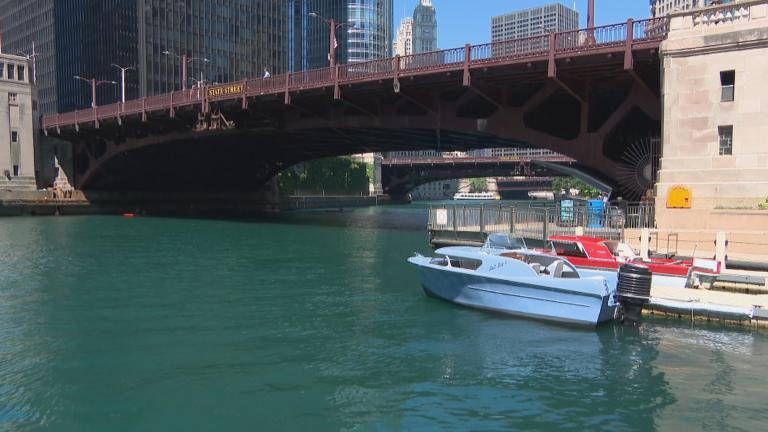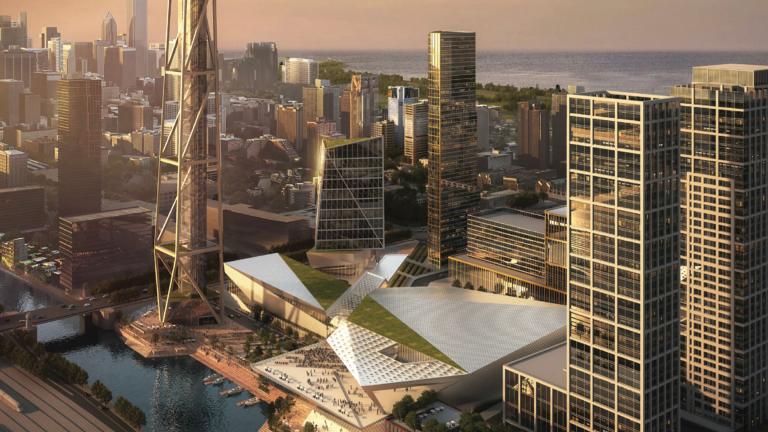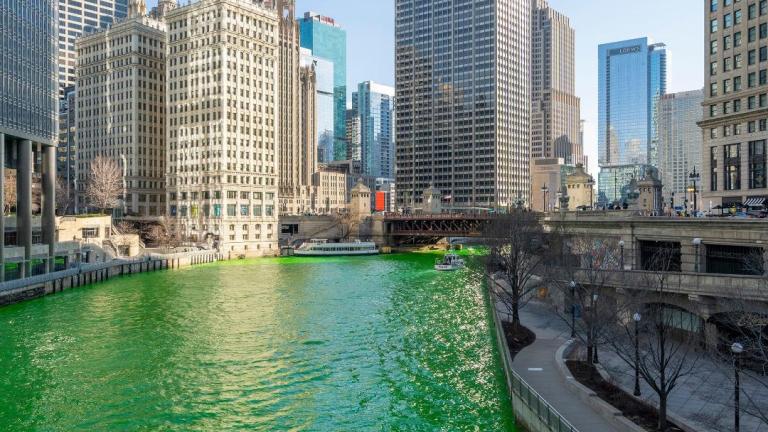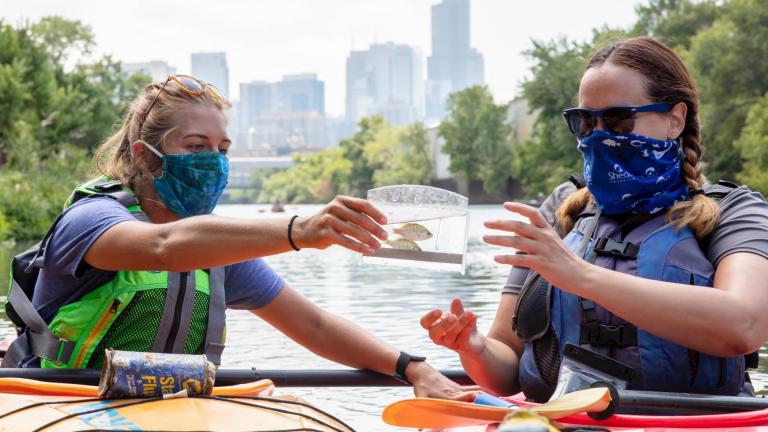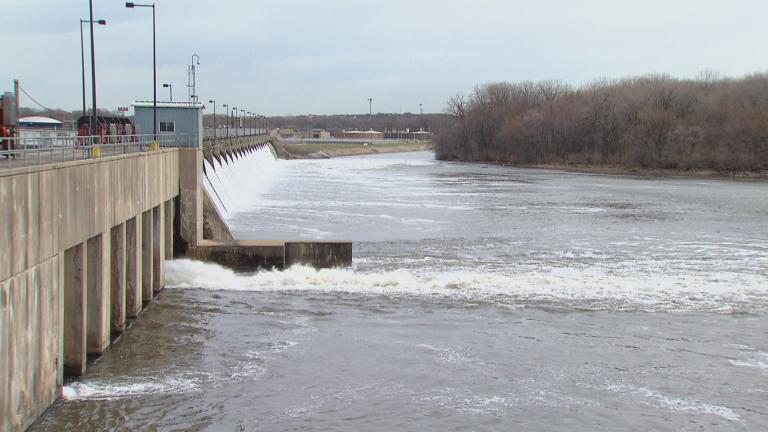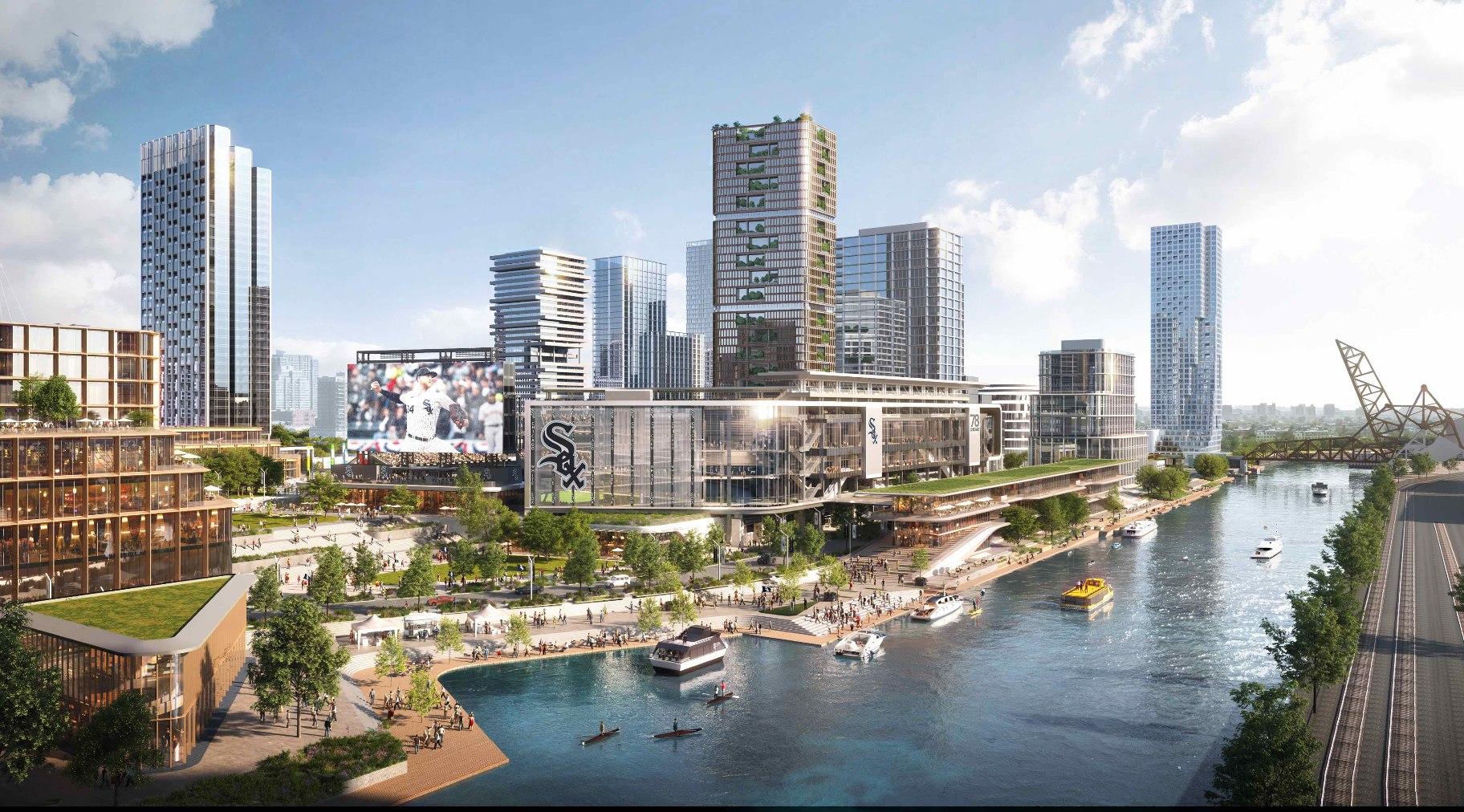 A rendering of a proposed new White Sox stadium and surrounding development, including housing, at The 78 site. (Credit: Related Midwest)
A rendering of a proposed new White Sox stadium and surrounding development, including housing, at The 78 site. (Credit: Related Midwest)
As a proposal gains steam to move the Chicago White Sox from their longtime home in Bridgeport to a shiny new stadium in a neighborhood that still doesn’t exist — The 78 — the plan’s toughest critics are likely to include members of a little known group that could wield significant influence should the project come to fruition.
The River Ecology and Governance Task Force was formed in the waning days of Mayor Rahm Emanuel’s administration and operates under the umbrella of the Department of Planning and Development.
“Our job is to be ever watchful,” said Margaret Frisbie, executive director of Friends of the Chicago River, which has a seat on the task force.
Among the group’s charges: “review of specific planned development proposals and potential site changes for buildings and properties along the river’s edge to ensure that new development is in line with the natural environment, recreation, and connectivity goals of the Chicago River Design Guidelines.”
What Frisbie saw in the initial architectural drawings released this week of the White Sox proposal falls far short of those standards, she says.
Development of a parcel the size of The 78 — at 62 acres and stretching a half-mile along the Chicago River’s South Branch — represents a unique opportunity to build a neighborhood, from the ground up, that incorporates considerations for the environment at the outset, Frisbie said.
Any design should address concerns about climate resilience, biodiversity, sustainability and pollution. “It would be an enormous mistake to not take that seriously,” she said.
While acknowledging that marketing renderings often bear little resemblance to the final product, Frisbie said it was cause for pause that the drawings shared by the White Sox and developer Related Midwest depicted, among other things, pavement running all the way to the water’s edge and significant use of glass in the site’s buildings, along a route known to be used by migratory birds.
Per guidelines for riverfront design, most recently updated in 2019, projects should support wildlife and enhance habitat, particularly on the river bank.
“The bank should be a natural bank,” Frisbie said.
What she would have liked to have seen was a proposal that embraced those guidelines and treated the river “as a living natural resource, not just a view.”
“The river needs to be wild,” she said.
In response to a request for comment, a spokesperson for Related Midwest emphasized that the renderings are preliminary and conceptual only and said the company is aware of and fully supports the Chicago River design guidelines.
“We will develop The 78 in accordance with those guidelines,” the spokesperson said via email. “Further, as a company, we are committed to the riverfront, and green and open space.”
Related Midwest’s restoration effort along the Chicago River as part of its redevelopment of the Lathrop Homes site is indicative of that commitment, the spokesperson said.
“Related met with us a ton when they did Lathrop,” Frisbie confirmed, “and the riverbank reflects that.”
Frisbie expects the task force will weigh in on any official, as opposed to speculative, plans, much as it’s done with another high-profile riverfront project — Bally’s planned casino.
Based on feedback from the task force, the casino drawings have gone through multiple changes, she said.
But the White Sox proposal has a sense of urgency and excitement surrounding it that the casino didn’t. “This kind of thing could catch fire” and steamroll a thoughtful planning process, Frisbie cautioned.
In those situations, “nature never wins,” she said, and everyone loses out on a forward-thinking design.
“I think that we need to keep a careful and cautious eye on everything proposed along the river,” Frisbie said. “If we’re advocates for nature, we’re advocates for people.”
This article has been updated to include comment from Related Midwest.
Contact Patty Wetli: @pattywetli | (773) 509-5623 | [email protected]

